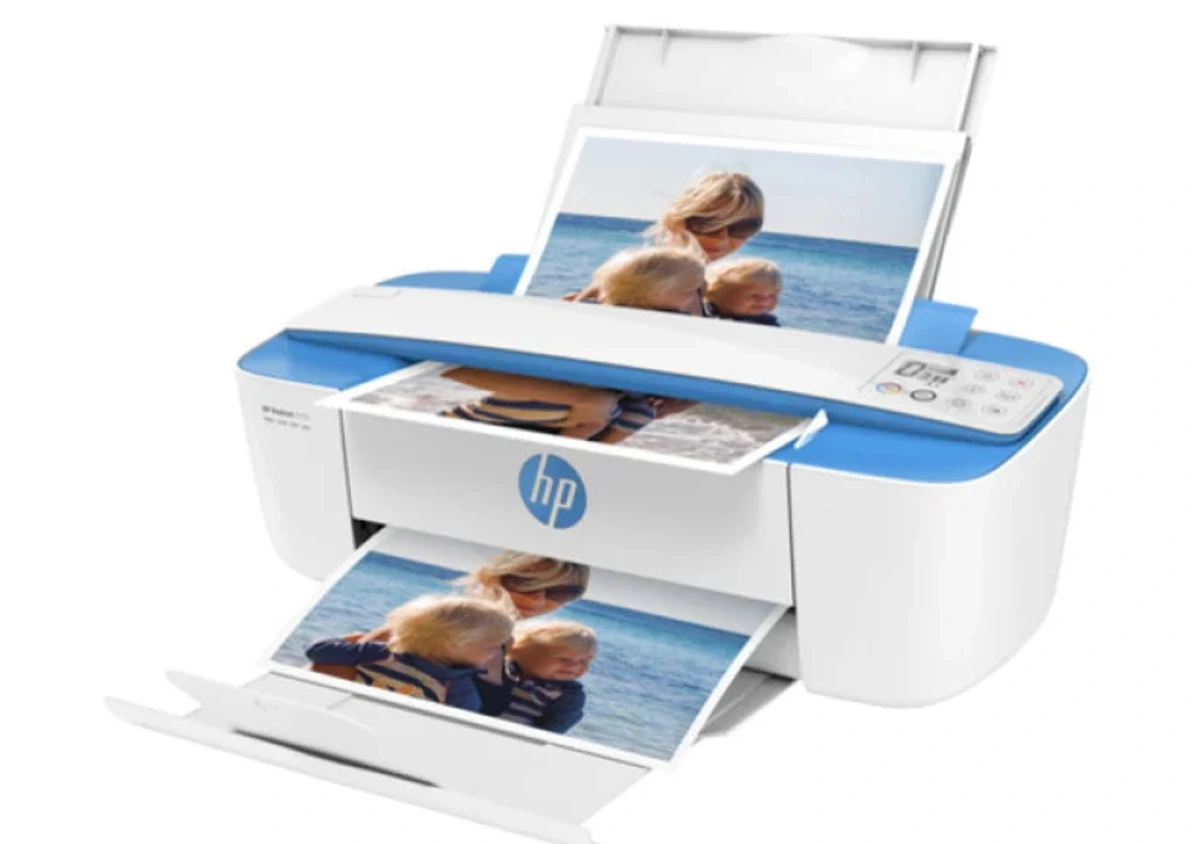The graphics produced by the DTF printer have vivid colors and distinct patterns, resembling those seen on screen-printed shirts. The shirts have a pleasant feel, and the ink is designed to last on various materials.
One of the drawbacks of DTG printing is that it requires a pre-treatment step. However, this is unnecessary with DTF or Direct to Film printing. To apply a pre-printed design to a garment, you must pluck it off the rack and press it with a heat press; no pre-treatment is required. Following are some of its benefits and drawbacks. We will also discuss in more detail how a DTF printer works.
How Does Direct Transfer Film Printer Work
DTF printing also offers the benefit of using a special film that is perfectly flat inside your printer. In other words, you can print and apply it in various ways. Because you’re printing on such a flat surface, you won’t have to worry about the printer head moving about as much as it does with other methods.
To print directly onto film, you must first print your image onto specific transfer paper using a direct-to-film printer. A special hot melt adhesive powder is coated onto the reverse of the printing film pattern after the pattern or design has been passed through the printer. The cloth will be pressed using a heat press as a final step.
Printing using a DTF is done backward and under the direction of specialist software that lets you adjust each print layer. Using this adhesive powder takes very little time and is easy to apply.
Additional Features Of DTF Printers
Small lettering and intricate craft lines may be reproduced using direct-to-film technology. The use of direct-to-film printing also eliminates the issues of chromatic aberration and color fastness. Once the ink dries, the color will never fade or alter.
Printing on film using a direct-to-film printer yields sharper images and text than conventional techniques, and hot stamping eliminates the fibrillation that may occur with colder processes.
Pros And Cons Of DTF Printer
Thes printers employ inkjet printing technology to produce printed textiles. Possible benefits of DTF printers include:
Rapid Print Times:
Due to their speed, DTFs are a viable alternative for enterprises that need to mass-produce printed fabric.
Exceptional Print Quality:
Printing on fabric generates prints with high resolution and accurate colors.
Versatility:
DTF printers can print on a broad range of textiles, including natural fibers such as cotton and silk and synthetic materials like polyester and nylon.
Customization:
Since DTF printers can print patterns, pictures, and text onto fabric in various colors, they provide a great degree of personalization.
Cons Of DTF Printer:
A few possible drawbacks of DTF printers include the following:
Cost:
Some firms or individuals may be unable to justify the high initial investment and ongoing upkeep costs associated with DTF printers.
Lack Of Variety In Fabric Options:
These printers can print on many different textiles; however, certain materials may not work well.
Ink Price:
The high ink consumption of DTF printers may be a significant factor in the high cost of printing.
Printing Time:
It has a fast print speed, and the printing process may take quite some time. This makes them unsuitable for enterprises that need to create large amounts of printed fabric rapidly.
DTF Printer For Shirts
DTF is suitable for a broad range of materials. Materials including leather, nylon, polyester, and even tri- or 50/50 mixes are included. DTG printers are limited to cotton textiles, whereas DTF printers can print on a broader range of substrates, making them among the most flexible digital printers available.
Shirts of any color are suitable for printing and transferring. Unlike white toner printers, you won’t need a heat press on the pricey type A or type B sheets. Compared to other approaches, this eliminates the need for a second step.
Dependability And Utilization Of DTF
Ink printers that use direct-to-film technology are both dependable and high-quality. They’re equipped to deal with massive output, making them vital to the sector’s continued success. DTF Ink and DTF powder and sheets for printing transfer film are required for professional results.
There is no doubt that sustainability is a major priority in the market, particularly in the fashion business. Getting rid of the need for a pre-treatment step is good for everyone. Switching to a direct-to-film printer means your business will use less overspray compared to traditional screen-printing techniques.
Difference Between White Toner Printer And DTF Printer
Two printers are used to print onto fabric: the white toner printer and the DTF printer.
When printing on clear or white media, white toner printers employ a fifth color (white) in addition to the standard four (cyan, magenta, yellow, and black). One layer of toner is applied to the cloth, and then the fabric is heated to attach the toner permanently. Printing on translucent or light-colored materials is now achievable with white toner printers, which was previously impossible with regular inkjet or toner-based printers.
Direct-to-fabric printers (DTF) instead use inkjet technology to create printed textiles. The print is made when the fabric is sprayed with small droplets of ink, which are then absorbed by the fibers and adhere to the fabric. Printers (DTF) can print on natural and synthetic textiles, such as cotton, silk, polyester, and nylon. In addition to producing high-quality prints quickly, their upfront and ongoing costs may be prohibitive.
Is DTF Printing Good Quality?
DTF printing is widely regarded as the gold standard for printing on textiles. Fabrics printed with DTF hold up quite well in the wash. Despite the small volume of ink used on each garment, the final result is much better. The clothing has a normal hand sensation, like a little coating of hot-melting powder that has stuck to them. This opens many possibilities for design and the potential to make unique prints on various fabrics.
It’s important to remember, too, that the print quality of a DTF printer might vary from machine to machine and ink to ink. Better-quality prints may be made using higher end DTF printers and ink. However, this may increase printing costs. However, DTF printing is widely regarded as a high-quality printing process for fabric.
Conclusion
If you’re in the market for a DTF printer, our buying guide was helpful to you. Think about how much ink will cost, how good the printer is, how big, and how often you’ll use it before purchasing it. Determine your requirements and DTF printing cost per shirt, and then settle on a DTF printer.




